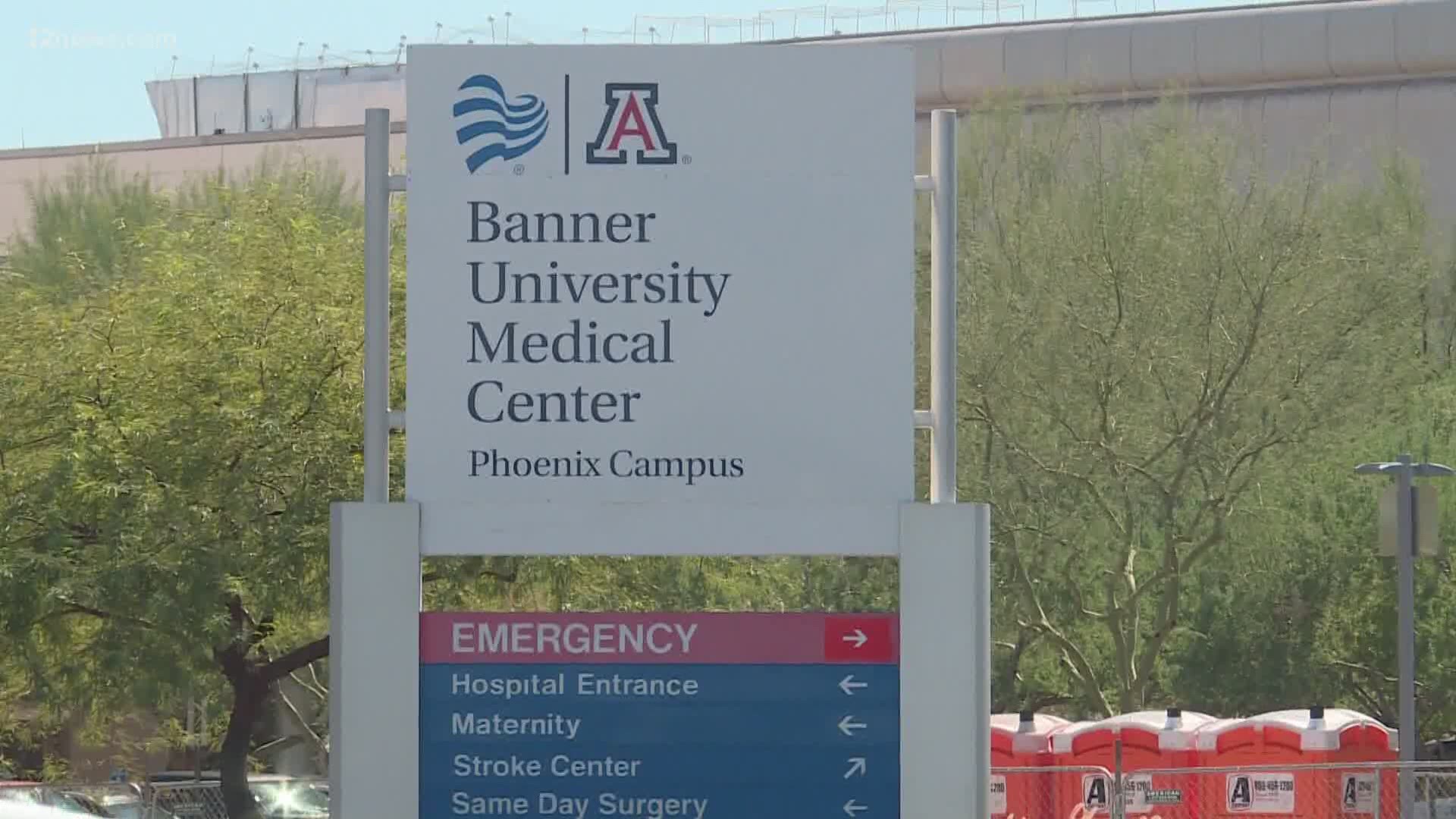PHOENIX — The numbers of new cases of COVID-19 in Arizona have remained high since mid-June, but Valley hospitals say they have been able to handle the caseloads and there are some numbers that could provide some hope in the fight against coronavirus.
One marker that reflects hospitals’ ability to keep up with COVID-19 cases is the availability of intensive care unit beds.
According to the Arizona Department of Health Services, the agency that tracks COVID-19 statistics, 10% of ICU beds are still available in Maricopa County hospitals. That number has been trending upwards since early March.
On March 26, AZDHS reported that 38% of ICU beds were available for both COVID-19 and non-COVID-19 cases. By July 2, only 9% of ICU beds had been available in Maricopa County.
“Banner still has capacity for COVID-19 and non-COVID-19 patients at our Arizona hospitals,” Becky Armendariz, the Senior Director of Marketing and Public Relations for Banner Health, said in an email. “This is largely due to our continued efforts to increase staffing and expand bed capacity.”
Some of the largest hospital groups in the Valley say that they still have ICU beds available for patients who need them.
“Dignity Health hospitals in Arizona remain in the contingency stage of the Crisis Standards of Care Plan established by the Arizona Department of Health Services, and our surge plans are working well.” Sara Patterson, a spokesperson for Dignity Health, said.
There are some positive numbers emerging in the fight against COVID-19.
According to AZDHS, 477 patients have been discharged from Valley hospitals on Tuesday. While it was one of the largest single-day discharge rates since March, the overall trend for discharges was down compared to the week before.
Maricopa County saw 1,761 patients allowed to go home in the four-day span of July 11-14. However, in the previous week’s four-day span from July 6-10, 2,558 patients were discharged. The workload has been heavy on hospital staff.
“These COVID cases stay longer in the hospital than typical other illnesses do,” said Dr. Joshua LaBaer of ASU’s Biodesign Institute, a leading researcher on COVID-19. “Most illnesses are managed relatively quickly; people are in for 2 or 3 days and they are out again. COVID cases can last a week or two weeks in the hospital, so they’re still seeing a greater number of cases admitted to the hospital than they are seeing getting discharged."
Another positive indicator is the Rt (pronounced R-naught). The Rt is the average number of people who are infected by one infected person. If the Rt is above 1.0, the infection will spread quickly. An Rt of less than 1.0 means the infection rate will be slowed.
Since June 24, the Rt in Maricopa County has been less than 1.0. The number only reflects the infectious value of the virus itself, not the number of cases the state experiences, but is a positive indicator of weakening trend in the virus.
“An Rt of more than 1, you should be worried," said Dr. Purnima Madhivanan, a professor at the University of Arizona’s Mel and Enid Zuckerman College of Public Health. "An Rt less than 1, that’s what we need."
According to experts, proper hygiene slows the spread of coronavirus, Influenza, bacteria and germs as does wearing a mask and keeping at least six feet apart from people not living in your household.
“This is not rocket science,” Dr. Madhivanan said. "We can actually change those graphs that are going up."
During the month of April, when Gov. Doug Ducey’s Stay at Home order was in effect, the state’s Rt was consistently below 1.0, dipping to .89 in late April. Starting on May 4, it rose to 1.0 and peaked at 1.25 on May 25.

